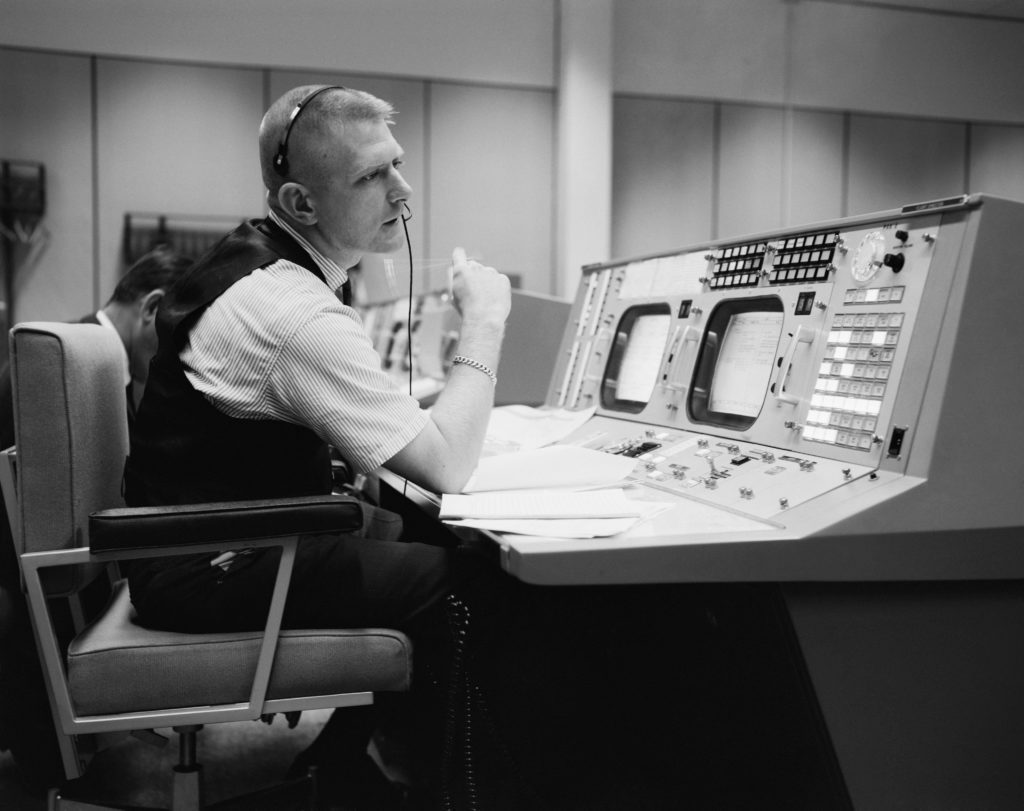
I am legitimately extremely excited for the 50th anniversary of the moon landing. The Apollo 11 mission is human undertaking that is nothing short of amazing.
Imagine if a few very smart fish got together under the ocean waves. They started wondering about what was outside of the sea. A few brave fish traveled near the shore, held their breath, and jumped above the water line to get a glimpse. They reported back that it was vast and incredible and needed to be explored. So the fish got back together and started designing things. They built a containment apparatus so they could breathe via their gills. They practiced using weights tied to their fins to get them used to the lack of buoyancy. They developed water propulsion systems to shoot small containers with these suited explorers. They figured out how to remain in constant contact with the adventurers. Then they took their contraptions to the edge of the ocean and shot themselves on to land. They travelled for days in inhospitable atmosphere, then came back perfectly safe.
Then they did it again and again.
This is what all the engineers, designers, pilots, planners, mathematicians, programmers and more did to get men on the moon.
And they did it before smartphones or the internet or even pocket calculators. Computers were massive and slow, by today’s standards.

The moon has always been with us. Even for early humans who didn’t quite understand the universe, the moon was a constant. It pulls our tides and tells turtles when to come ashore and bury eggs. It lights our way and directs our ships. It entrances moths. It acts as a calendar. Fifty years ago, we made it to the surface.
Different cultures see varying faces on the moon — a man, a rabbit, a woman with a tree, a cook over the fire — but they all imagine someone up there.
Houston: Among the large headlines concerning Apollo this morning, is one asking that you watch for a lovely girl with a big rabbit. An ancient legend says a beautiful Chinese girl called Chang-O has been living there for 4,000 years. It seems she was banished to the Moon because she stole the pill of immortality from her husband. You might also look for her companion, a large Chinese rabbit, who is easy to spot since he is always standing on his hind feet in the shade of a cinnamon tree. The name of the rabbit is not reported.
Michael Collins: Okay. We’ll keep a close eye out for the bunny girl.
I’ve pulled together a collection of images and links about the Moon, space exploration, and the people who have been inspired by it — and who’ve inspired me to look up into the night sky.
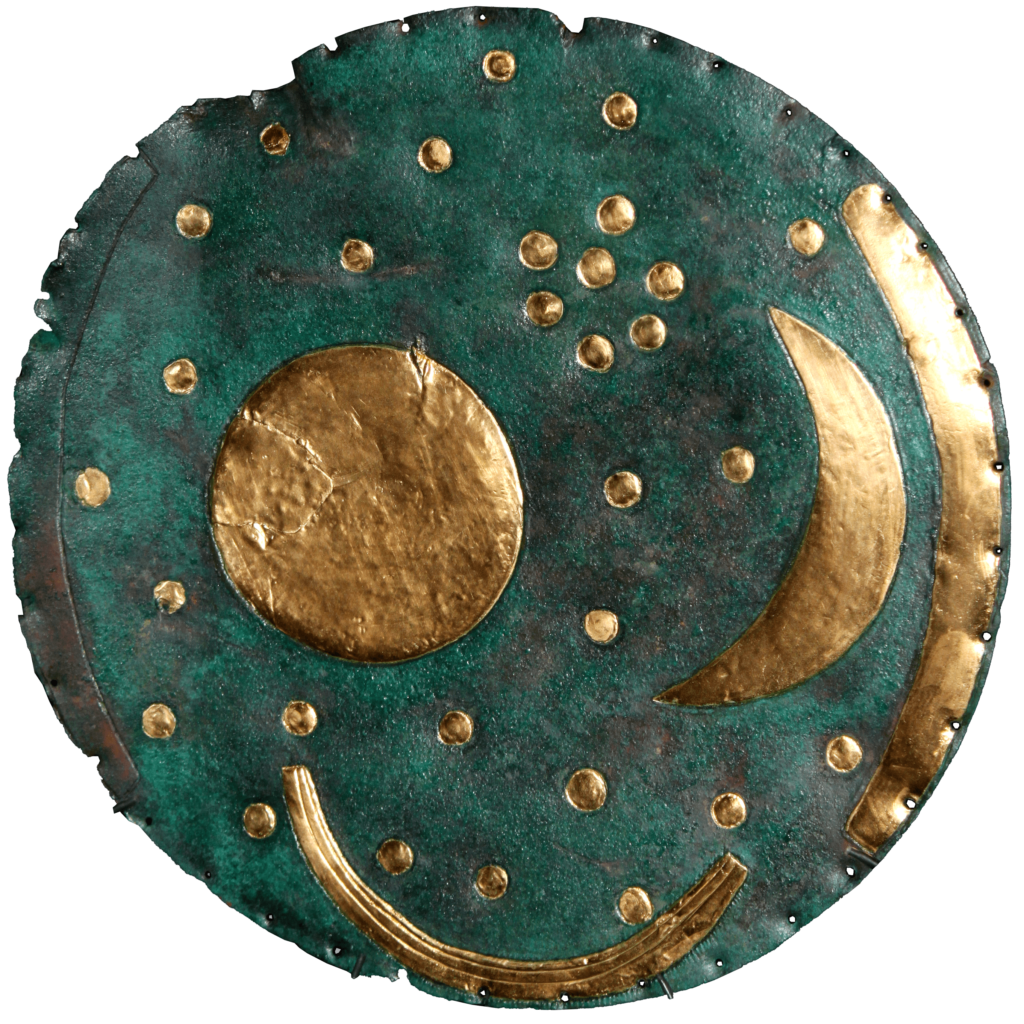
The Nebra Sky Disk is Bronze Age artifact and is the oldest known representation of the night sky. It has been named a UNESCO Memory of the World object.
Learn more at ArtHistoryProject.com.
R
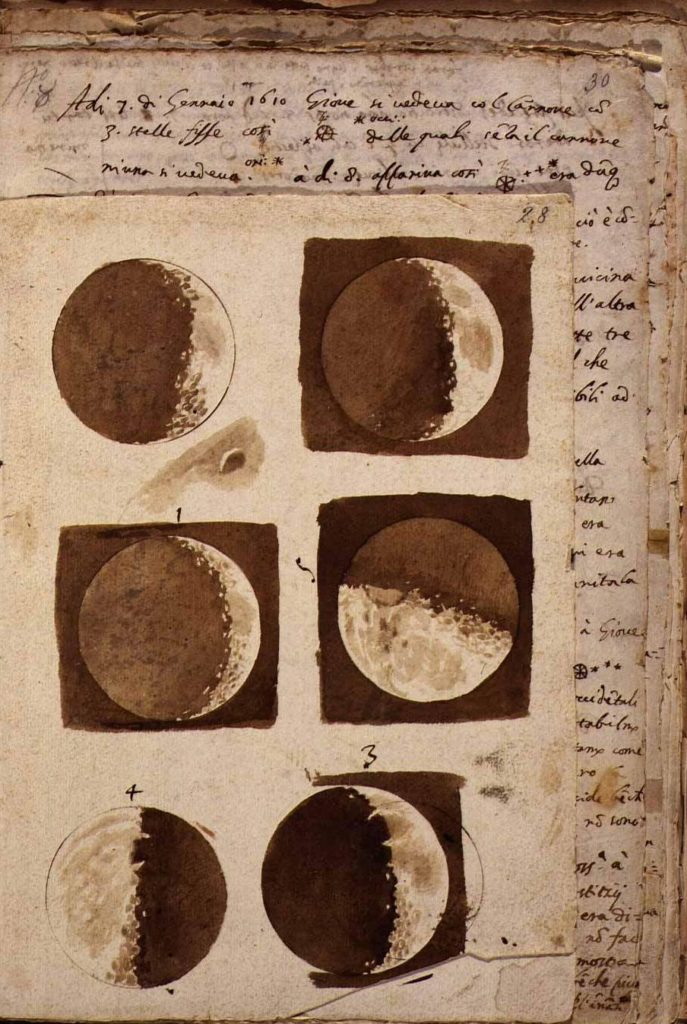
The first realistic images of the moon, as seen through a telescope, were drawn by Galileo Galilei. He built his own 20x magnifying telescope in 1609 and began making observations on stars, constellations, planetary movement and more. His illustrations showed that Aristotle and Ptolemy were incorrect about the essence of the moon.
View the book online at Stanford Libraries.
R
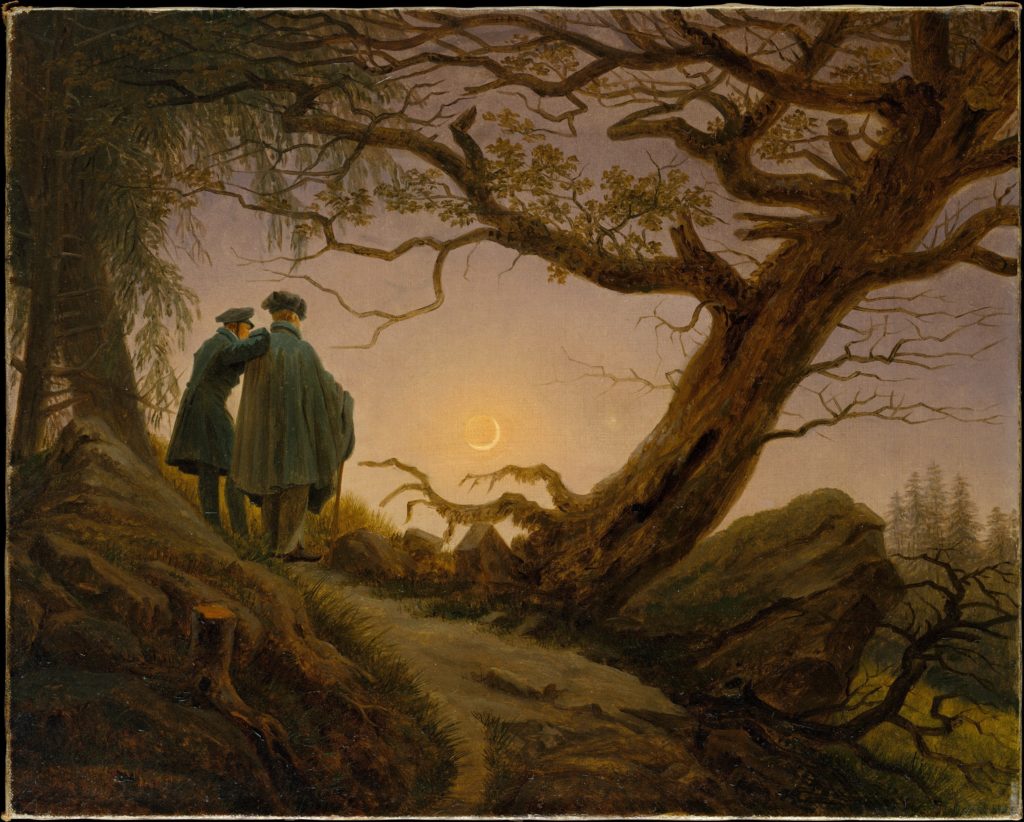
Friedrich is one of my favorite painters and this is one of my favorite works. In the Romantic era, quiet appreciation of nature was important. Realizing the vastness of the universe, and the small but significant role of humans, way key to the movement, and is captured in this beautiful painting.
More from The Metropolitan Museum of Art.
R

Tsukioka Yoshitoshi (1839-1892) was a master woodblock printer and painter of traditional Japanese scenes. One of his most famous series is One Hundred Aspects of the Moon which features images of Japanese life under the night sky.
More about the artist.
R
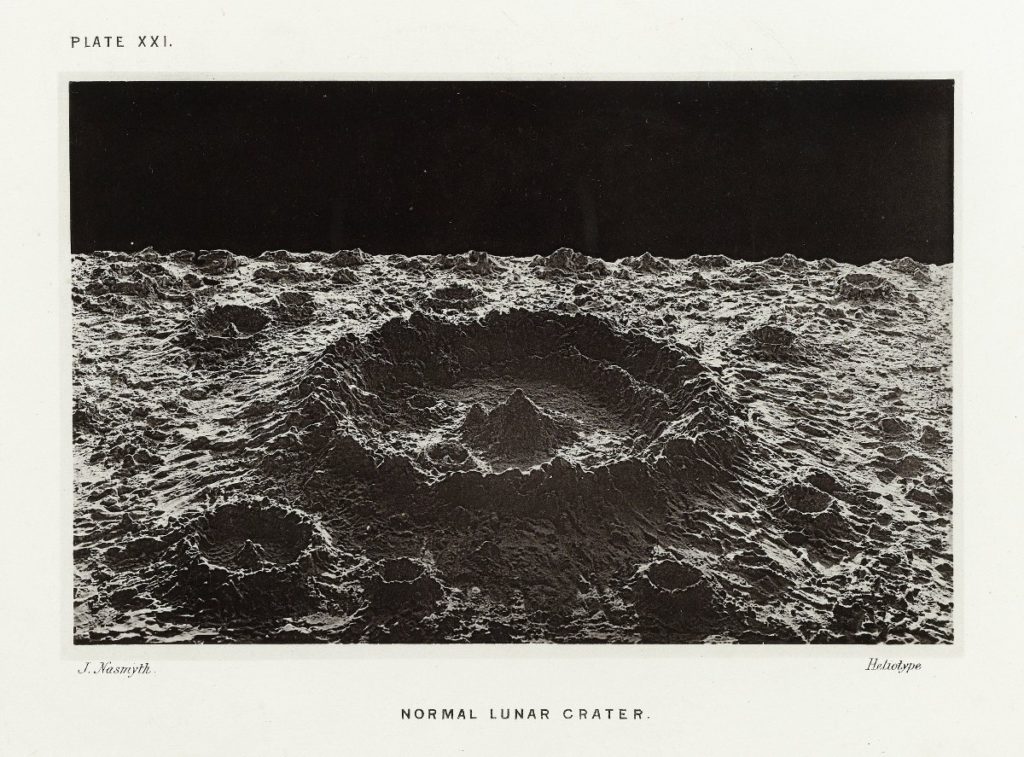
In 1874, James Nasmyth took detailed photographs of the moon’s surface. Sort of. What he actually did may have been no less complicated. He took painstaking sketches of the moon’s surface, based on what he could see through a telescope (that he designed and built), then he created topographical replicas out of plaster. Then he lit and photographed them. The result is eerily realistic.
See the entire album and learn more about Nasmyth at Public Domain Review.
R
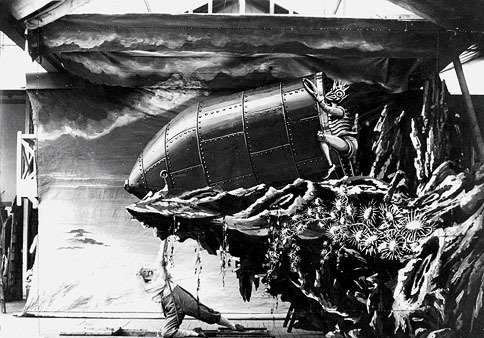
Georges Mèliés was born into the lucrative but uninspiring family business of boot making. He became enamored of stage magic, then at its height, and put his artistic skills to work. He designed magic tricks and illusions and then eventually pioneered some of the earliest special effects on screen. His film A Trip to the Moon (1902) is a delightful fantasy about what explorers found when they landed on the moon. It features detailed costumes, intricate sets and in-camera special effects.
Also view my list of moon movies you can rent from DVD Netflix.
R
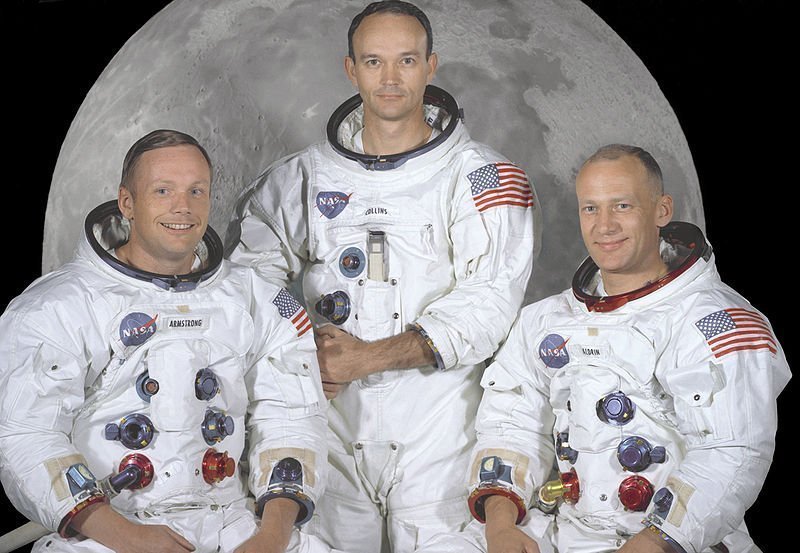
All of the Apollo 11 on-board recordings are available for listening. In the midst of technical and procedural conversations there are gems like this one.
Mission Control: Okay, 11. This is Houston. We’re getting a beautiful picture of Langrenus now with its rather conspicuous central peak.
Michael Collins: The Sea of Fertility doesn’t look very fertile to me. I don’t know who named it.
Neil Armstrong: Well, it may have been named by a gentleman whom this crater was named after, Langrenus. Langrenus was a cartographer to the King of Spain and made one of the – one of the early reasonably accurate maps of the Moon.
Mission Control: Roger. That’s very interesting – –
Neil Armstrong: … at least it sounds better for our purposes than the Sea of Crises.
Or this exchange of Houston reading them the daily news.
Mission Control: … In Minneapolis, Minnesota, the weather bureau, after recapping today’s weather showing a high of 88 and a low of 72, has noted “snowfall: none.” From St. Petersburg, Florida, comes a radio report from the Norwegian explorer, Thor Heyerdahl, which said that the crew of his papyrus boat, the Ra, will sail into Bridgetown, Barbados, despite damage from heavy seas. … National League baseball yesterday, Thursday: St. Louis 11, Philadelphia 3; Montreal 5, over Pittsburg 4; Atlanta 12, Cincinnati 2; San Fransciso 14, and Los Angeles 13. … And in Corby, England, an Irishman, John Coyle has won the world’s porridge eating championship by consuming 23 bowls of instant oatmeal in a 10-minute time limit from a field of 35 other competitors. Over.
Michael Collins: Roger. I assume Houston didn’t play yesterday.
Mission Control: That’s correct.
Michael Collins: I’d like to enter Aldrin in the oatmeal eating contest next time.
Mission Control: Is he pretty good at that?
Michael Collins: He’s doing his share up here.
Mission Control: Let’s see. You all just finished a meal not long ago, too, didn’t you?
Buzz Aldrin: I’m still eating.
Mission Control: Okay. Does that – that – –
Michael Collins: He’s on his – He’s on his 19th bowl.
Listen to them via Public Domain Review.
R
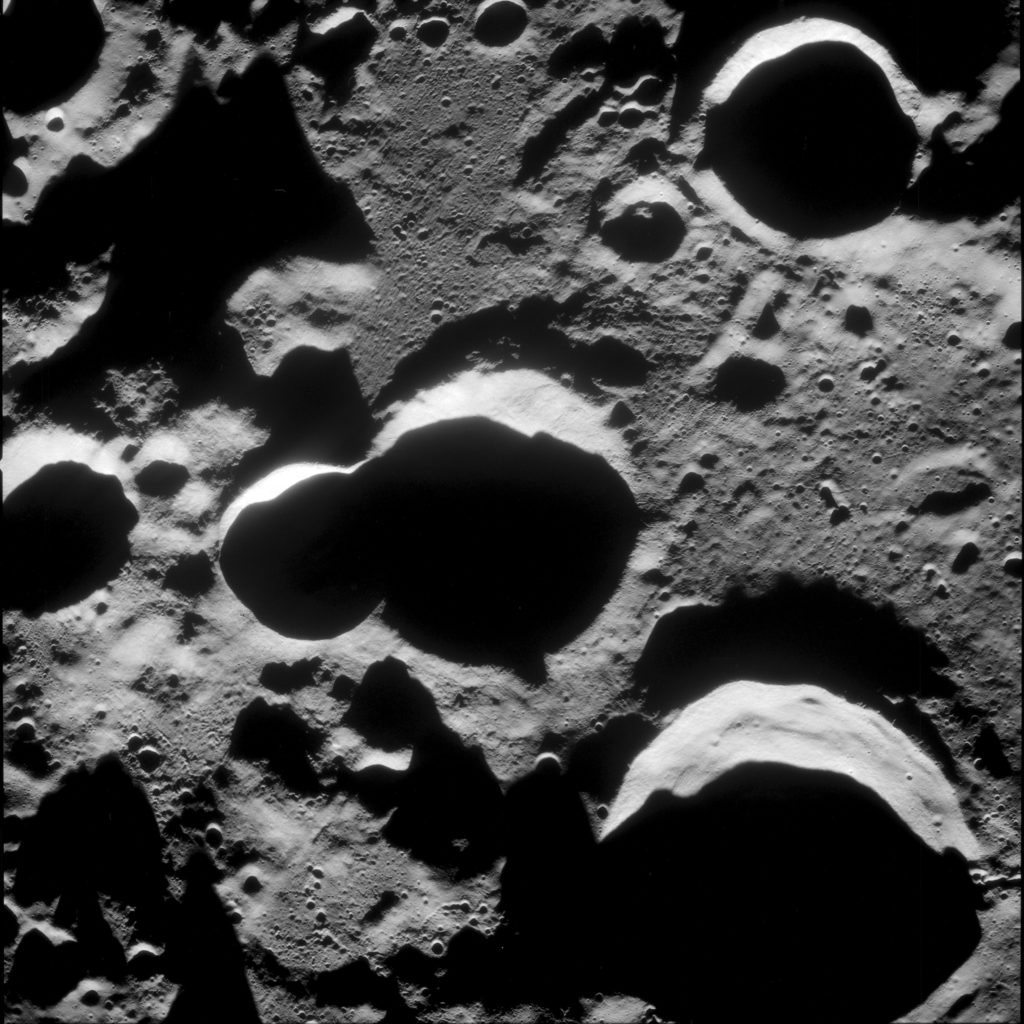
All of the Apollo mission photos are now available online. ALL OF THEM. It’s hilarious to look at the blurry selfies and mistaken snaps. You can also find amazing images like a picture of the jury-rigged air filter from Apollo 13 and candids on Mission Control.
View and download images from space.
R
Do you remember the first lunar landing? Do you have a favorite story about space exploration? Or a favorite piece of art related to the moon?
R
